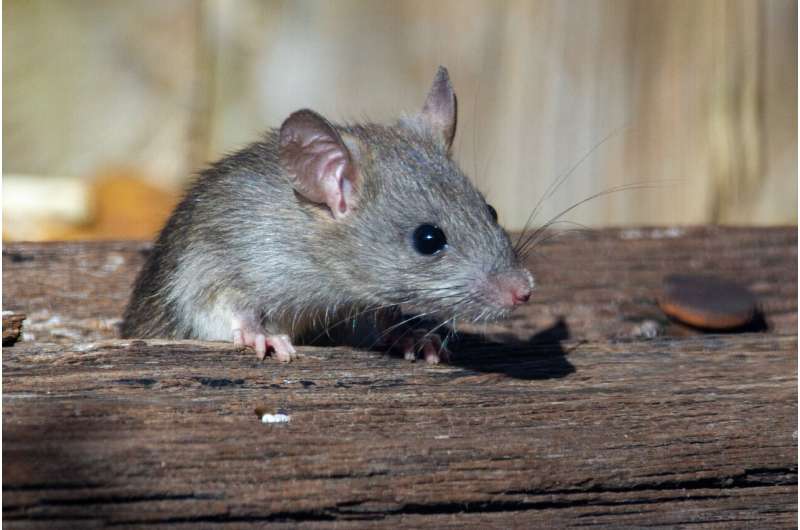allis chalmers ws front end

Most neuroscience studies investigating motor skills are carried out on rodents. In these experiments, rodents are typically tested on simple motor tasks that they can easily complete using motor behaviors in their repertoire, or slightly adapted versions of these behaviors.
In contrast to these studies, motor skill learning in humans can be a lengthy process that results in highly complex and task-specific movements. To probe these skills reliably and directly, generic risperdal nz without prescription some researchers have been trying to devise ways of training rats to also perform more complex behaviors.
A few years ago, researchers at Harvard University developed a task that trains rats to perform complex and task-specific movement patterns over several weeks of practice. Just like complex movement patterns observed in humans, the behaviors they train the rats to perform are highly stereotyped, idiosyncratic and stable over time. Subsequently, the researchers carried out a study aimed at identifying the brain areas involved in the control of the new complex motor skills acquired by the rodents.
“To our surprise, we found that the motor cortex was not involved in the generation of these learned patterns,” Professor Bence P. Ölveczky, the lead researcher on the study, told Medical Xpress. “But if not the motor cortex, which part(s) of the brain is learning to generate the skills we train? Our attention turned to the basal ganglia.”
Their recent study, published in Nature Neuroscience, suggest that the basal ganglia, a group of subcortical nuclei in the brain, indeed specify and control the fine-grained details of learned motor skills via their interaction with lower-level motor circuits.
The basal ganglia are known to be a plastic network, which means that it can adapt over time and learn to associate inputs about the state of the world with actions that are rewarding in a specific state. This plasticity is believed to underpin the basal ganglia’s role in selecting the most rewarding actions in specific situations.
“We asked ourselves whether this associative network can also learn to produce signals that shape movements on a millisecond timescale,” Ölveczky said. “In other words, can the action selection idea of the basal ganglia be extended to encompass the fine-grained control of skilled movements—a function previously ascribed to motor cortex and (to a lesser degree brainstem motor centers)? We set out to test this.”
To test their hypotheses, Ölveczky and his colleagues measured the activity of populations of single neurons in the region of the basal ganglia known to be associated with movement, which in rodents is called the dorsolateral striatum (DLS). They collected their measurements on animals that had acquired a motor skill and related the neural activity they detected to different aspects of the acquired skills, which they carefully identified using video tracking technology.
“We found that we could predict the detailed kinematics on a given trial based on the firing of the neurons in DLS, but not in a neighboring striatal region (DMS),” Ölveczky said. “This means that neurons in DLS encode information about the behavior and hence could serve to specify the movements.”
To confirm whether the activity of DLS neurons contributed to the rodent’s skilled movements, the researchers lesioned the DLS region of the striatum in subjects that had been intensively trained on new complex motor skills. Interestingly, they found that when this region was damaged, the animals reverted to the simple movements they had performed at early stages of training.
Although the trained rodents had not entirely forgotten the task they were trained on, they appeared to no longer be able to recall and perform the complex movement patterns they acquired during training. As lesions to the DLS region led to a decline in the rodent’s performance on the task they were originally trained on, this region is likely to play a key role in the control of learned motor behaviors.
“Our work extends our understanding of what the basal ganglia do, implicating these important midbrain structures in generating the fine-grained structure of skilled movements,” Ölveczky explained. “This raises the possibility that some of the motor deficits associated with BG disorders are due not to an inability to select appropriate actions in downstream control circuits but indeed to generate them in the first place.”
The recent study by this team of researchers could have important implications for the field of neuroscience. In fact, their findings suggests that rather than simply influencing the selection or vigor of an action, as previous works suggested, the basal ganglia might play an active role in generating the details of physical movements.
So far, Ölveczky and his colleagues primarily focused they studies about motor skills on the motor cortex and basal ganglia. In their future studies, however, they would like to broaden the scope of their work and also examine other brain regions that could be involved in the control of motor skills.
Source: Read Full Article
